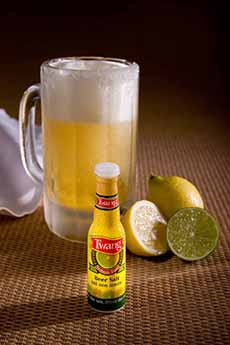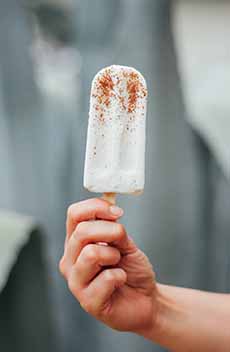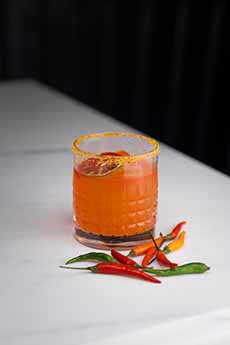Beer Salt From Twang: Flavored Salts For Food, Drinks & Snacks
|
In our field, we learn something new every day—and we love to discover. Recently, we came upon beer salt, which, to the uninitiated, is exactly what it sounds like: salt to shake onto the top of a beer bottle, can, or glass. Meet our Top Pick Of The Week: Twang’s line of flavored kosher salts. First, we thought: a lime wedge in a Corona bottle, yes; a salt rim on a Margarita, absolutely; drinking shots of tequila with salt on the dorsal side* of one hand (to lick) and a wedge of lime held in the other hand (to suck), certainly—especially if you’re a fan of Ernest Hemingway. But who thought of actually salting beer? The ritual of putting salt and lime into a beer is a well-known Mexican-inspired tradition. The longtime practice crossed the border in 1986, when Roger Trevino Sr., having observed the practice in Mexico, created three flavors of Twang’s beer salt in San Antonio. (The innovation was adding flavor to the salt.) While beer and salt was well-known in border towns, it wasn’t until Twang lime and lemon-lime beer salts appeared that salting a beer grew in popularity throughout the Lone Star State and beyond. Instead of placing the salt and lime juice inside the beer, old school, Trevino placed Twang on the rim of the beer and called it “dressing your beer.” People learned to ask the bartender for a beer, dressed. It took the better part of 40 years for this information to end up on our desk! Blame it on our location, New York City. Not only is it far away from Texas, but it’s a salt-concerned city that requires chain restaurant menus to state the amount of excess salt in each portion, to save consumers from ingesting too much salt. But now we know, and we can choose. To paraphrase Proust, the real voyage of discovery consists not in seeking new landscapes, but in having new eyes [source]. Beer + salt: As a salted-rim Margarita fan, we like it! Dress our beer, please, Mr. Bartender. While a salt rim is a natural with Mexican beers, we’ve enjoyed it with more complex craft beers. Truth to tell, we didn’t have a bottle of Bud on which to try it. But in our [perhaps jaded] opinion, beer salt can only improve the pallid American mega-beer brands. Over the decades, Twang has expanded into flavored salts for food, cocktail rimmer blends, Michelada mix, and more. After you read about the products, celebrate Cinco de Mayo using one of the Twang-A-Rita cocktail rimmer blends to create the Red Clay cocktail recipe below (photo #6). Are you ready to dress your canned cocktail or juice (photo #2)? And your popcorn (photo #4)? And your ice pop (photo #5)? Twang’s small-batch products are made with all-natural colors and flavors, quality kosher flake salts, and pure cane sugars. Twang Beer Salt Dress (i.e., salt) your beer, be it in a bottle, can, or glass. It’s easy to carry the pocket size (photo #1) to your favorite watering hole. Use these flavorful blends for topping a broad assortment of foods and snacks. They’re also “eating salts”: from the shaker to the fingers to the mouth! Add a salty-sweert rim to cocktails, fruit juices, and anywhere you’d like some seasoning. Twang introduced bottled Reserve Michelada Clásica Mix after years of research (photo #3). Add it to a glass of beer for an instant Michelada. You can even add it to an open can or bottle—just drink a bit of the beer first, to make room for the Michelada mix. And don’t forget the rimming salt. This recipe (photo #6) was created at the B-Side Cocktail Lounge, at JdV by Hyatt Hotels in Baltimore. |
|
|
|
Preparation 1. POUR the Twangarita Safari Spice salt onto a plate. Wet the entire rim of the cocktail glass with the lime wedge. Dip the rim of the glass into the salt and rotate until the rim is fully covered. 2. COMBINE the lime juice, simple syrup, Cointreau, red bell pepper, and serrano chile in a cocktail shaker and muddle to extract the pepper flavor. Add the tequila and ice and shake vigorously/ 3. STRAIN into the rimmed cocktail glass. Garnish with a dehydrated or fresh lime wheel. ________________ *Did you know that your hands have a dorsal side? The palm side of the hand is considered the front of the hand and is referred to as the palmar side. The back of the hand (what we erroneously called the “top” or “front” of the hand) is called the dorsal side. The word “dorsal” refers to something that is towards the back of something. The side of your hand that palms, or grasps, something, is the front. Another example: The dorsal fin of fish and marine mammals is the fin on their back. Hence, dorsal pertains to the back of something. Also see: tennis backhand. CHECK OUT WHAT’S HAPPENING ON OUR HOME PAGE, THENIBBLE.COM.
|
||








